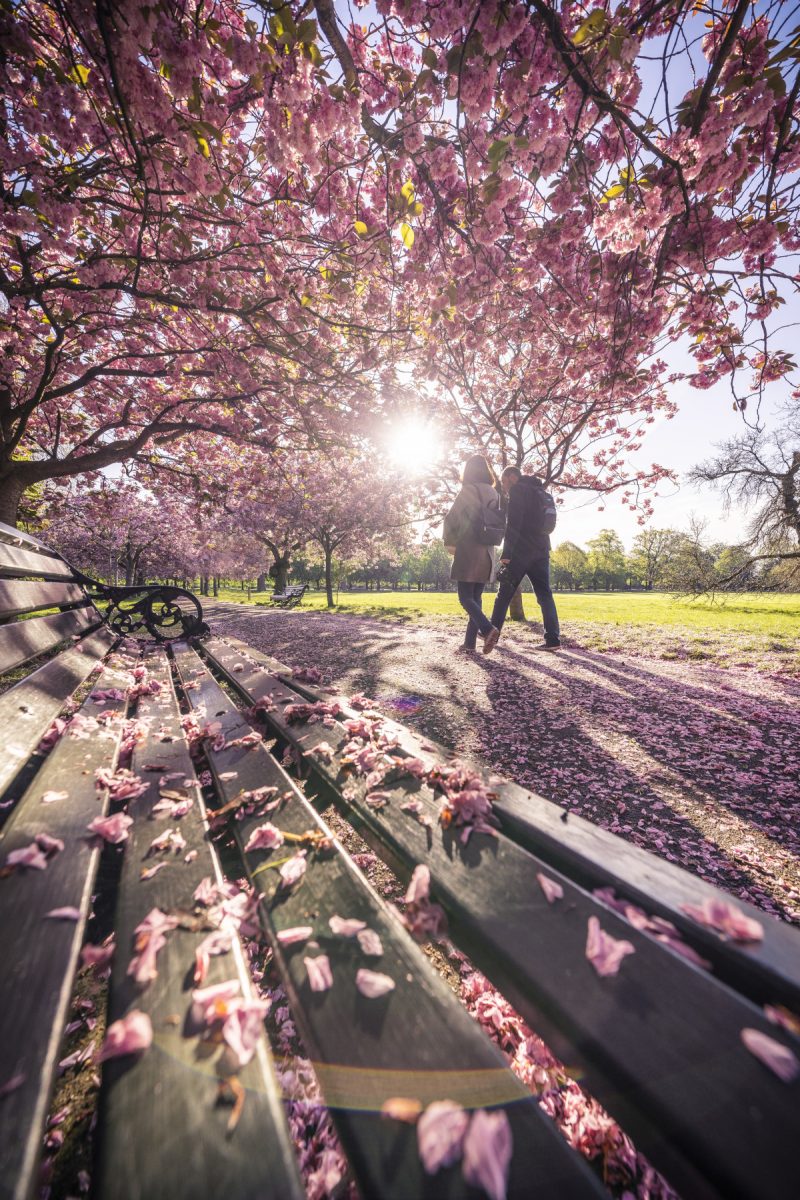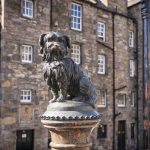This post takes you on a tour of the five Royal Parks in central London, Regent’s Park in the north of the city and the 4 others which form ’a green necklace’ through central London, as described by the author Lisa Picard: ‘From St James’ Park at the foot of Buckingham Palace, round the palace by Green Park and across the traffic in Hyde Park Corner, with Kensington Gardens further to the west.’ There’s a little history here and there, plus ideas for what you can do in each park today, from hiring a pedalo or visiting an Italian garden to seeking out the pelicans whose ancestry dates back 350 years.
There is much more detail on all 5 parks on the podcast.
Regent’s Park
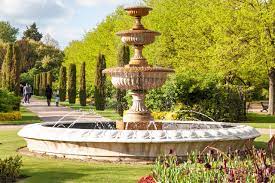
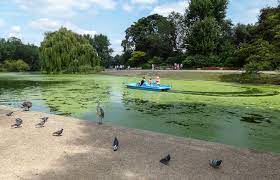
Regent’s Park was created in the 1820s on former royal hunting ground. Henry VIII had kept this to himself, the Regent – the future George IV – had the park created and in 1845, the public were finally granted access … for 2 days a week! It’s bounded on one side by Regent’s Canal and the architect John Nash designed the white stucco regency terraces which line the other three sides. It’s divided into different sections: look out for St John’s Lodge Gardens, ornamented with sculptures and ponds, for Queen Mary Gardens, where you’ll find London’s largest collection of roses, for the memorial bandstand – where lunchtime concerts are held – and for the boating lake.
There are 2 major attractions. Regent’s Park Open Air Theatre is the world’s oldest professional outdoor theatre – it opened in 1932 with a production of Twelfth Night and runs an 18 week season each summer, typically including drama, musicals and shows for families. London Zoo is here too, originally founded in 1826 with animals from the Royal Menagerie. Famous past residents include the first hippopotamus seen in Europe, (he arrived in 1850), Jumbo the Elephant (c 1865) and Winnie the Bear, who inspired A A Milne’s Winnie the Pooh.
St James’ Park
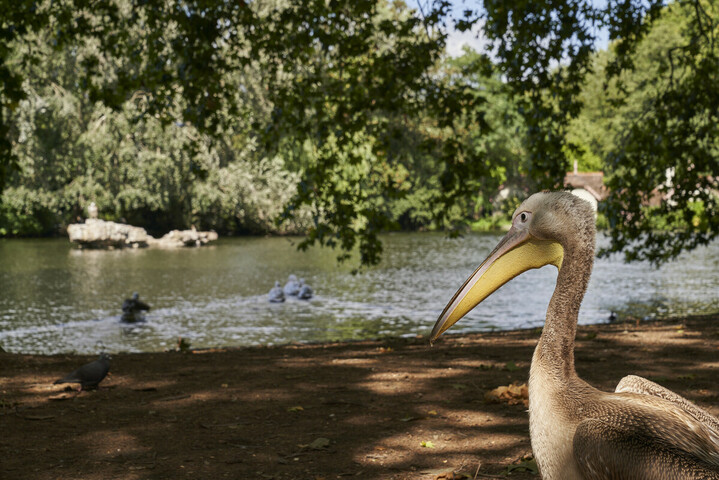

St James’ is London’s oldest Royal Park, land originally drained by Henry VIII to create a deer park. It was redesigned in the 17th century by Henrietta Maria, wife of Charles I, and she replaced the rural setting with a more formal, French-style layout, creating a central canal and an island ‘haven’ where parrots were kept in gilded cages. Pelicans, a gift to Charles II from the Russian Ambassador, arrived in the 1660s and their descendants are still there today. It may sound idyllic, but was in fact notorious for robbers and prostitutes, a place no ‘nice folk’ would dream of frequenting at night. There’s more on this on the podcast.
Today, it’s a lovely place to linger or walk through on your way from Trafalgar Square to Buckingham Palace. It runs alongside the Mall and the bridge in the middle is an excellent spot for photos, with views of the palace, Horse Guard’s Parade, Whitehall and Westminster. Here you will find some 30 species of birds – ducks, geese and gulls – and if you are on Duck Island in the early afternoon you may see the pelicans being fed. Other nearby attractions include the National Gallery in Trafalgar Square, and the King’s Gallery and Royal Mews next to the palace. There are lots more ideas for things to do nearby on the podcast.
green park

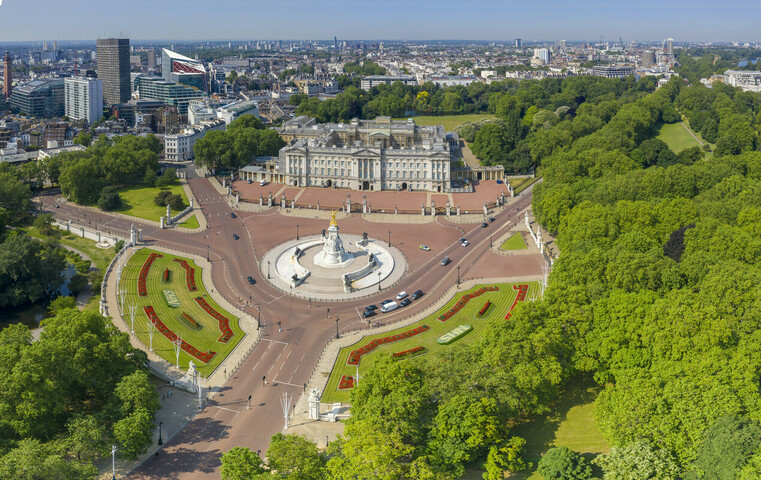
This is the smallest of the Royal Parks – another Henry VIII creation – named because it is not overly landscaped, but rather, as the Royal Parks website puts it, ‘a peaceful triangle of mature trees and grasslands … a quiet retreat from city life right next to Buckingham Palace.’ It’s said that the flowers were removed after King Charles II’s wife heard that he’d been picking them for his mistress, but in fact there is a spectacular array of crocuses and daffodils each spring. 41 gun salutes are held in Green Park for special occasions – the monarch’s birthday and the State Opening of Parliament for instance. They go off at 11.08 am. 41? 1.08? Who said the Brits are eccentric?
Hyde Park


At 350 acres, Hyde Park is the largest Royal Park. In 1851 it hosted the Great Exhibition, when the Crystal Palace (which burned down in 1936) was built and 6 million visitors flocked to London to see the latest inventions. A contemporary writer described the scene thus: ‘The young green of spring, the boats on the Serpentine, the flags round the top of the long crystal roof, were all full of life and flutter; the scene was beautiful, gorgeous, unparalleled, inspiring.’ The 1872 Parks Regulation Act gave the right to meet and speak freely in Hyde Park, leading to the creation of Speaker’s Corner and the holding of demonstrations and rallies here, a tradition which continues today.
Today’s Hyde Park is full of runners, walkers and cyclists. You can hire rowing boats and pedalos on the Serpentine lake, swim in the lido (home to Britain’s oldest swimming club), visit cafes or the Royal Parks Shop, find wandering paths, meadows and a rose garden. It also hosts major events – as the Royal Parks website puts it: ‘this is where suffragettes gave fiery speeches, where the Rolling Stones rocked out by the lake, where the UK’s first Pride March began and where Nelson Mandela took the stage. No wonder it’s nicknamed The People’s Park’.
kensington gardens


Nathaniel Hawthorne, visiting from America in the 1850s, called Kensington Gardens ‘the most beautiful piece of artificial woodland and park scenery that I have ever seen.’ It’s linked by the Serpentine Lake to Hyde Park and was originally very much the posh end of things – a strict dress code was maintained when it opened in 1730 and generations of nannies and nurserymaids gathered here with their charges. Public facilities were gradually introduced – drinking fountains in 1855, lavatories in 1899 – although not everyone approved. The Russian Ambassador’s wife lamented the arrival of the middle classes, remarking that ‘good society no longer goes there.’
Kensington Gardens is criss-crossed with paths to wander and grass to relax on. You can hire deckchairs around the lake, visit the Italian Gardens with their lovely fountains and symmetrical layout, see an exhibition at the Serpentine Galleries or take your children to the Diana Memorial Playground. The Albert Memorial is here too, Queen Victoria’s tribute to her husband. He sits atop an enormous plinth, surrounded by dozens of statues to men – yes, just men – representing the best of British in science, the arts, agriculture, industry and so on. It’s at one edge of the park, just a few minutes’ walk from Albert’s other – more useful – memorial, the Royal Albert Hall.
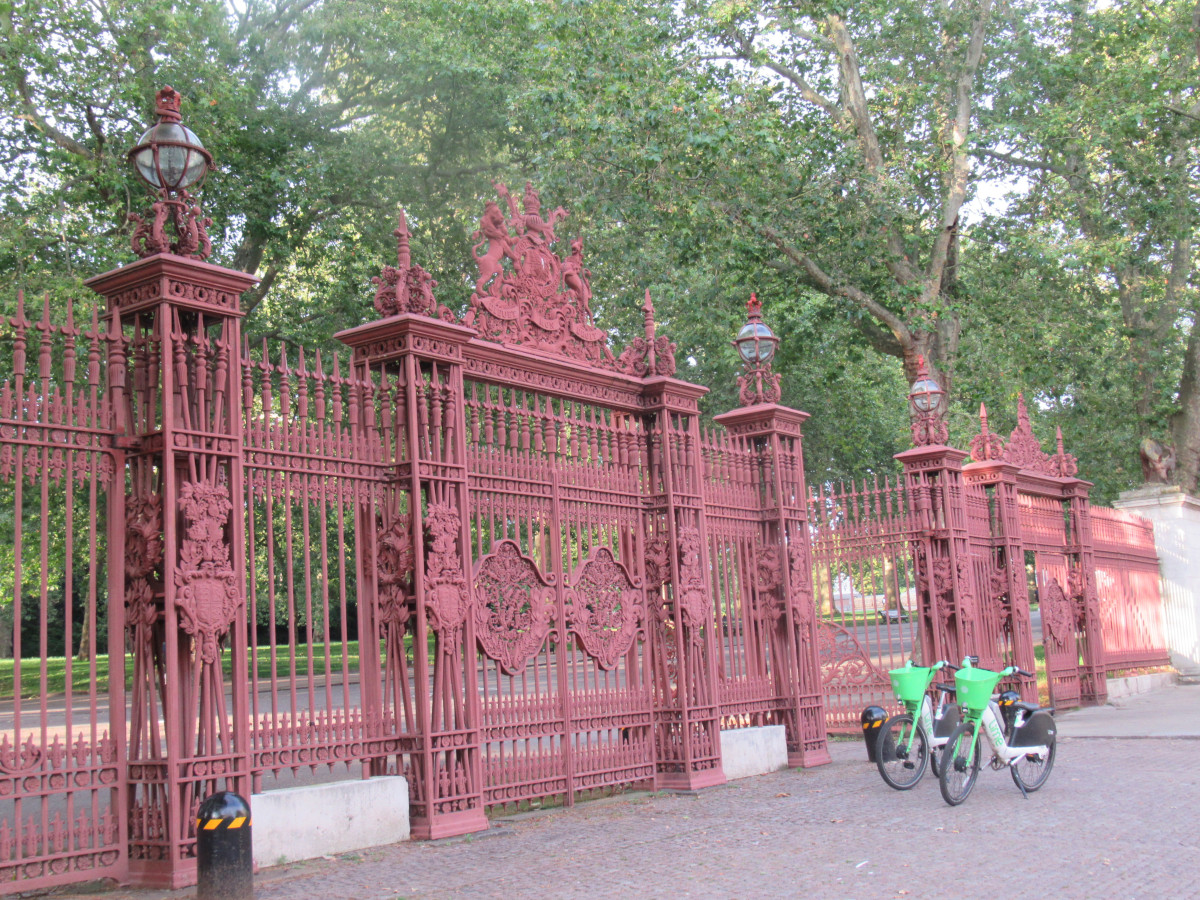

Listen to the POdcast
Reading suggestions
London’s Royal Parks by Paul Rabbitts
London Parks by Hunter Davies
links for this post
London’s Royal Parks
Regent’s Park Open Air Theatre
London Zoo
Serpentine Galleries
Previous episode The Royal Borough of Greenwich
Next episode The River Thames through London
Last Updated on June 2, 2024 by Marian Jones

